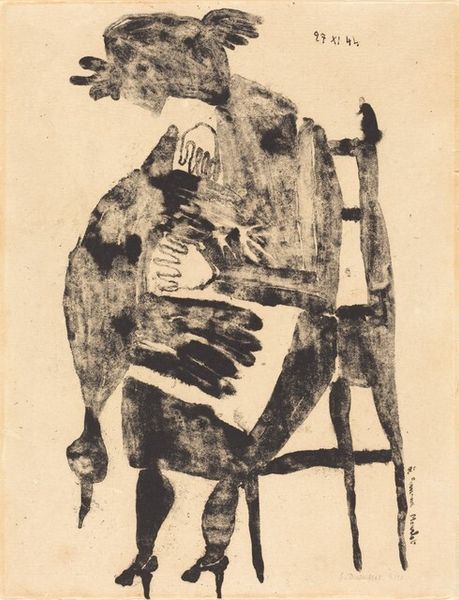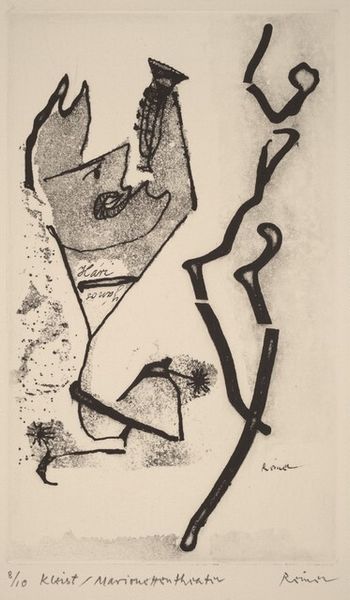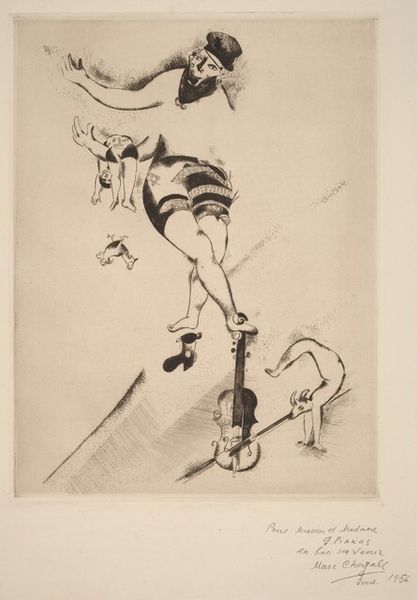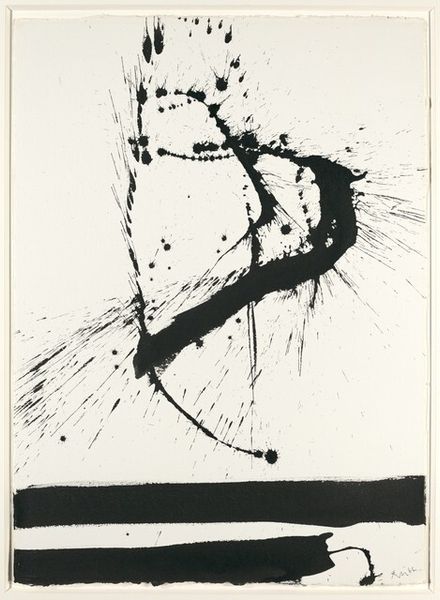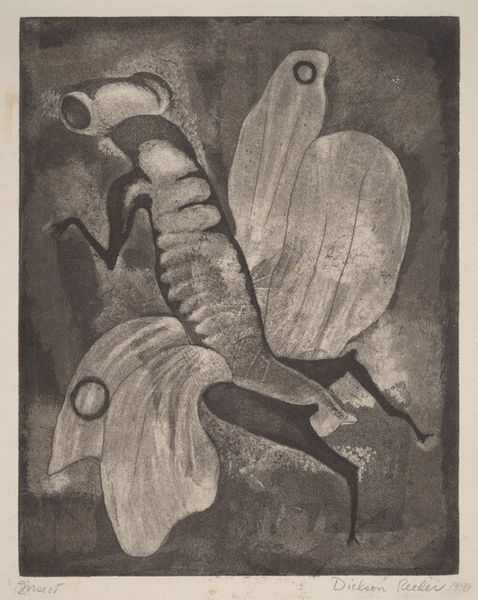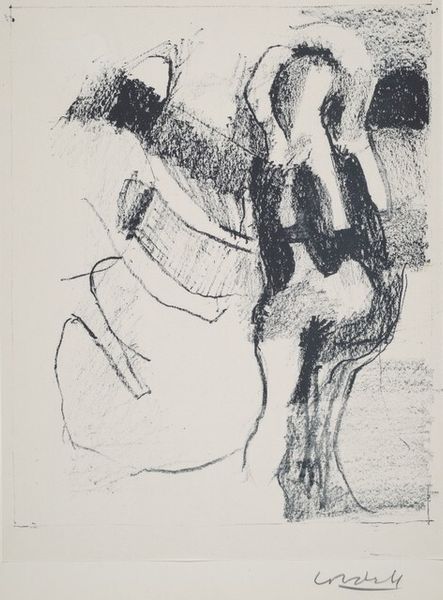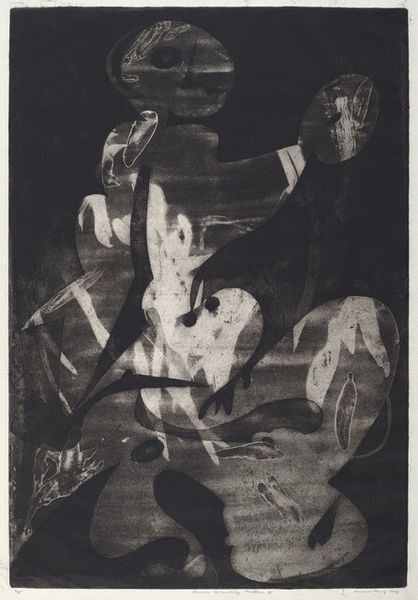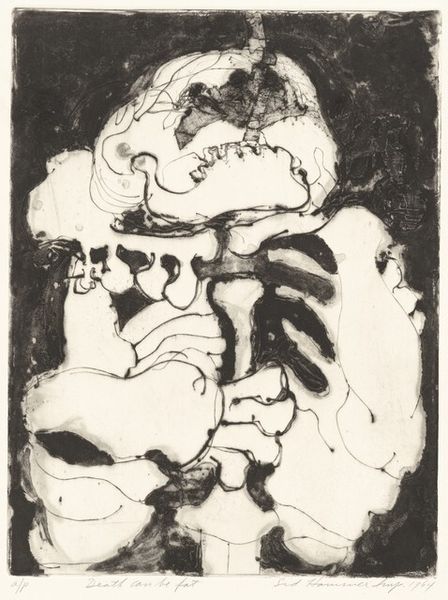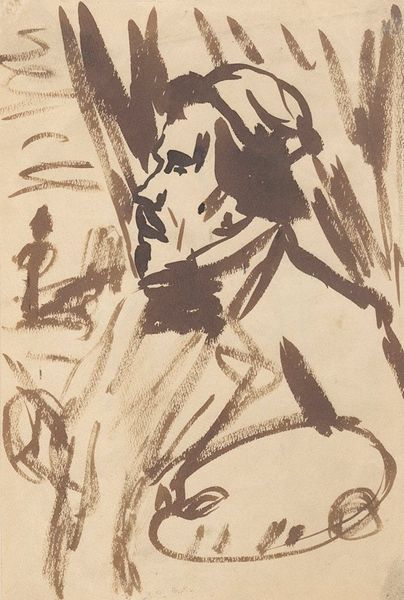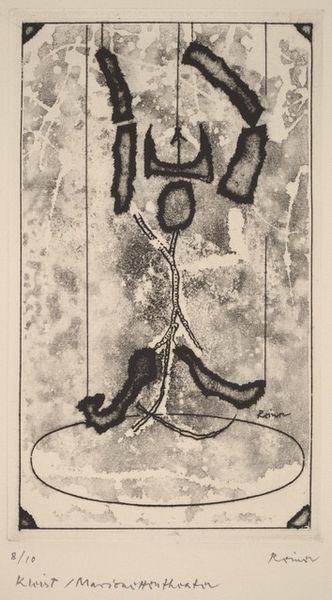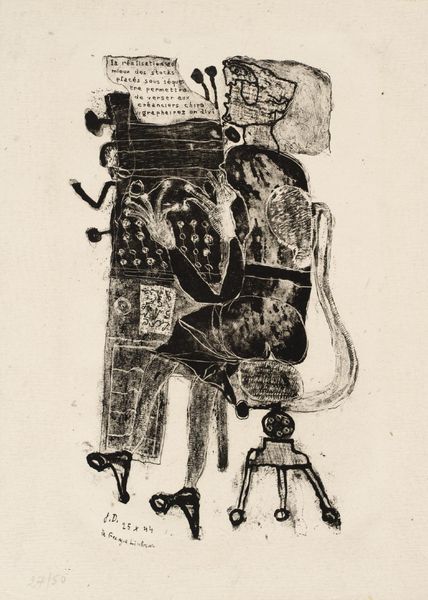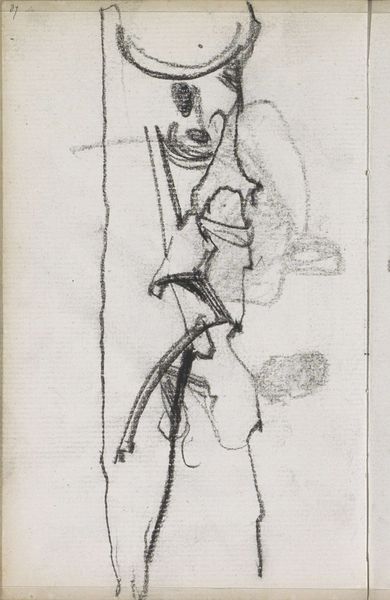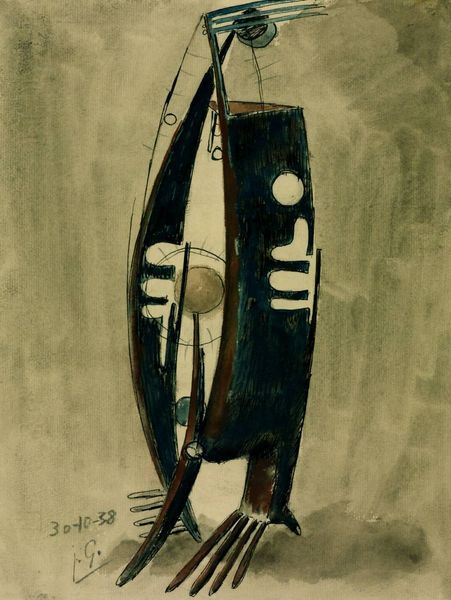
#
portrait
#
cubism
# print
#
modernism
Copyright: National Gallery of Art: CC0 1.0
Editor: This is Marc Chagall’s "Musician" from 1922, a black and white print. It feels like a strange but gentle depiction of someone embodying their instrument. What do you see in this piece? Curator: The most immediate thing is the doubling, or perhaps the fusion, of figure and instrument. Note how the musician seems literally formed by the cello. This merging is more than just whimsical; it speaks to the deep cultural association between music and identity, especially in diasporic communities for whom music preserved a cultural memory. Editor: A cultural memory? Curator: Yes. Think about how klezmer music, for example, carries the emotional weight of generations of Eastern European Jewish experience. Chagall, having grown up in such a community, likely felt this connection acutely. See the hat – the suggestion of a jester, the medieval harlequin… it connects with a tradition, but the man merges with his instrument. Is this liberation or constriction? Editor: Constriction, perhaps? The musician’s face seems almost pained, as if burdened. Curator: Possibly. The modernist fracturing, echoing Cubism, visually embodies inner psychological states as much as it represents outward appearances. What emotions do musical instruments conjure for you? Think about the role they play in shaping cultural narratives. Editor: It makes you wonder what kind of music this musician is playing, and what memories it evokes. This print feels a lot richer now, thinking about how the personal and cultural can be intertwined. Curator: Indeed. It's a potent reminder that images can carry echoes of history, culture, and even the weight of shared experience.
Comments
No comments
Be the first to comment and join the conversation on the ultimate creative platform.
